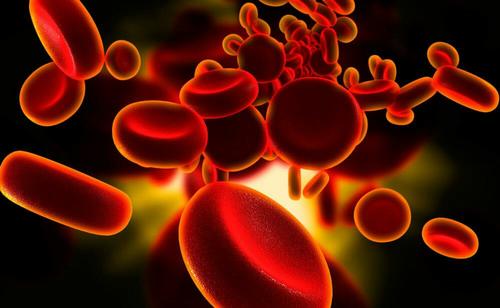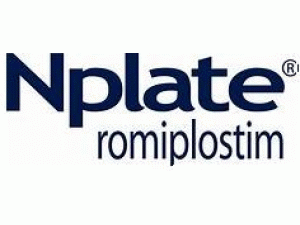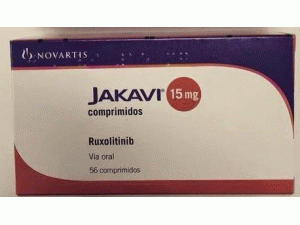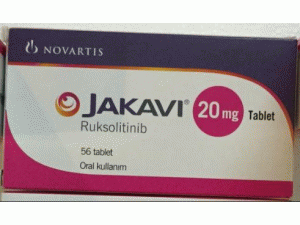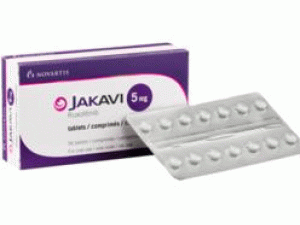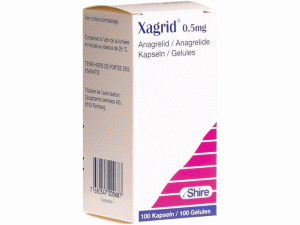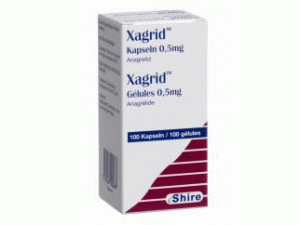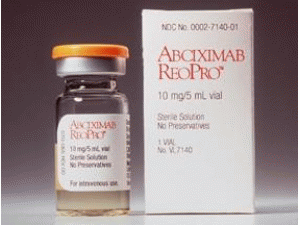艾曲波帕片_Eltrombopag_艾曲波帕(Eltrombopag)说明书中英文对照
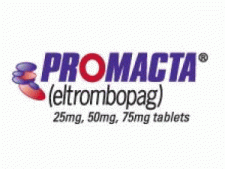 产地国家:美国
处方药:是
所属类别: 50毫克/片 30片/瓶
包装规格: 50毫克/片 30片/瓶
计价单位:瓶
生产厂家英文名:NOVARTIS
原产地英文商品名:PROMACTA 50MG TAB 30/EA
原产地英文药品名:ELTROMBOPAG
中文参考商品译名:PROMACTA 50毫克/片 30片/瓶
中文参考药品译名:艾曲波帕
产地国家:美国
处方药:是
所属类别: 50毫克/片 30片/瓶
包装规格: 50毫克/片 30片/瓶
计价单位:瓶
生产厂家英文名:NOVARTIS
原产地英文商品名:PROMACTA 50MG TAB 30/EA
原产地英文药品名:ELTROMBOPAG
中文参考商品译名:PROMACTA 50毫克/片 30片/瓶
中文参考药品译名:艾曲波帕
简介
近日,美国食品药品监督管理局(FDA)已扩大批准PROMACTA(eltrombopag,艾曲波帕)用于治疗慢性丙型肝炎患者的血小板减少症,从而使那些患者能够开始或维持干扰素基础的治疗。本品对于那些由于低血小板计数而不能使用干扰素治疗的患者来说是第一个支持性的护理疗法。本品联用干扰素的疗法经证明,能够让患者得到更好的持续性病毒应答或病毒治疗。“慢性丙型肝炎是一个严重的公共健康问题。”葛兰素史克肿瘤部总裁,医学博士PaoloPaoletti说道,“有些慢性丙肝的患者同时伴有低血小板计数。常用的干扰素疗法会加重这一问题。当下FDA批准的PROMACTA,能够为医生带来解决该问题的方法。这意味着更多的慢性丙肝患者可以启动或保持干扰素的治疗。从而使这些患者得到更好的病毒治疗。”该批准是基于两个III期临床研究,ENABLE1和2,涉及1521例血小板计数小于75000/ul的患者。ENABLE1使用聚乙二醇α-2a干扰素(PEGASYS,派罗欣)联合利巴韦林抗病毒治疗,ENABLE2则使用聚乙二醇α-2b干扰素(PEGINTRON,佩乐能)联合利巴韦林的疗法。批准日期:2015年8月24日 公司:葛兰素史克公司/NOVARTISPROMACTA(艾曲波帕 eltrombopag)片剂, 口服使用PROMACTA(艾曲波帕 eltrombopag)悬浮液 用于口服最初美国批准:2008警告:风险肝功能失代偿患者的慢性丙型肝炎见完整的黑框警告完整处方信息。在患有慢性丙型肝炎,PROMACTA与干扰素和利巴韦林的组合可以增加肝功能失代偿的风险。目前的主要变化适应症和用法,慢性ITP患者血小板减少症治疗:08/2015适应症和用法,重型再生障碍性贫血治疗:08/2014用法与用量,慢性免疫(特发性)血小板减少:08/2015用法与用量,重度再生障碍性贫血:08/2014用法用量:监督管理局:08/2015 作用机理 艾曲波帕是口服生物可利用的,小分子TPO受体激动剂,其与人类TPO受体的跨膜结构域相互作用,并且启动诱导增殖和分化从骨髓祖细胞信号传导级联。 适应症和用法 PROMACTA是用于治疗指示的血小板生成素受体激动剂:•血小板减少症在成人和儿童患者1年以上有慢性免疫(特发性)血小板减少症(ITP)谁不得不皮质激素,免疫球蛋白,或脾切除的反应不足。•血小板减少症患者的慢性丙型肝炎,以允许基于干扰素的疗法的启动和维护。•例重症再生障碍性贫血谁曾不足的响应免疫抑制治疗。 使用限制 PROMACTA只应该用于ITP患者,其血小板减少的程度和临床情况增加出血风险。•PROMACTA应仅在慢性丙型肝炎,其血小板减少症的程度防止基于干扰素的治疗开始或限制,以保持基于干扰素的疗法的能力来使用。安全性和有效性尚未有直接作用的抗病毒剂成立于联合不干扰素用于治疗慢性丙型肝炎感染的。 用法用量 采取空腹(饭后前1小时或2小时)。•慢性ITP:每日一次,大多数成人和儿童患者6岁老年人和25毫克1〜5年的患者需要肝损伤和东部的一些病人的剂量减少老年儿童患者启动在50毫克PROMACTA每日一次亚祖先。调整以维持血小板计数大于或等于50×10 9 / L。不要超过75毫克,每天。•慢性丙型肝炎相关的血小板减少症:每天一次,所有患者调整实现目标血小板计数要求启动抗病毒治疗,不要超过100毫克的每日剂量(2.2)启动PROMACTA在25毫克•重型再障:发起PROMACTA在50毫克,每日一次,大多数患者在肝损伤患者或东亚血统的患者减少初始剂量调整,以保持血小板计数大于50×10 9 / L不要超过150毫克每天。 剂型和规格 片剂:12.5毫克,25毫克,50毫克,75毫克,100毫克和 口服混悬液:25毫克 禁忌症:无。 警告和注意事项 肝毒性:监测肝功能治疗前和治疗过程中。•血栓/血栓栓塞性并发症:门静脉血栓形成已在慢性肝病患者定期接受PROMACTA监测血小板计数的报道。 不良反应 在成人ITP患者,最常见的不良反应(大于或等于5%和大于安慰剂)分别为:恶心,腹泻,上呼吸道感染,呕吐,ALT升高,肌肉痛和尿路感染。 在儿童患者1岁及以上ITP患者,最常见的不良反应(大于或等于10%和大于安慰剂)是上呼吸道感染,鼻咽炎和。 在患有慢性丙型肝炎相关的血小板减少症中,最常见的不良反应(大于或等于10%和大于安慰剂)分别为:贫血,发热,疲劳,头痛,恶心,腹泻,食欲降低,流感样疾病,无力,失眠,咳嗽,瘙痒,寒战,肌痛,脱发,和外周水肿。 在患者严重再生障碍性贫血,最常见的不良反应(大于或等于20%)为:恶心,疲劳,咳嗽,腹泻,和头痛。 药物相互作用 采取PROMACTA之前至少2小时或4小时的任何药物或含有多价阳离子如抗酸剂,富钙食品,和矿物质补充剂产品之后。 特殊人群中使用 怀孕:根据动物数据,PROMACTA可能造成致命的损害•哺乳母亲:一个应做出决策中止PROMACTA或哺乳,考虑到PROMACTA的重要性母亲。 包装规格/储存与处理 片•12.5毫克片剂是圆形,双凸,白色,薄膜包衣用GS MZ1凹陷和12.5在一侧片剂和在30瓶可用:NDC 0007-4643-13。•25毫克片剂是圆形,GS NX3和25在一侧凹陷和双凸透镜,橙,薄膜包衣片剂在30瓶可用:NDC 0007-4640-13。•50毫克片剂是圆形,双凸,用GS UFU凹陷蓝色,薄膜包衣片剂和50在一侧上,并且在30瓶可用:NDC 0007-4641-13。•75毫克片剂是圆形,GS FFS凹陷和75在一侧上与双凸,粉红色,薄膜包衣片剂在30瓶可用:NDC 0007-4642-13。•100毫克片剂是圆的,双凸面,绿色,薄膜包衣用GS 1L5凹陷片剂和在30 :NDC 0007-4646-13本品含有干燥剂瓶是可用的。在20℃和25℃之间室温(68°F至77°F)允许至15℃至30℃(59°F至86°F);.游览商店[见USP控制室温]是否不去除干燥剂(如果存在)。在分装原瓶。口服混悬剂25毫克口服悬浮液是一种红棕色至黄色粉末在单位剂量的分组,共同包装在配有40毫升冲调容器,口服给药的注射器,并用注射器端口能力的螺纹盖的试剂盒。每个试剂盒(NDC 0007-4515-27)包含30个数据包:NDC 0007-4515-01。储存在20℃和25℃之间的室温(68°F至77°F)允许至15℃至30℃(59°F至86°F).游览[见USP控制室温]继重构,该产品应立即施用,但也可以20℃和25℃之间贮存30分钟的最大周期(68°F至77°F);偏移允许至15℃至30℃(59° F到86°F)[见USP控制室温。扔掉(丢弃)该混合物,如果30分钟内未使用。英文版说明书
PROMACTA(eltrombopag)PROMACTA is indicated for the treatment of thrombocytopenia in patients with chronic immune (idiopathic) thrombocytopenia (ITP) who have had an insufficient response to corticosteroids, immunoglobulins, or splenectomy.Limitations of use:PROMACTA should not be used to normalize platelet counts. PROMACTA should be used only in patients with ITP whose degree of thrombocytopenia and clinical condition increase the risk for bleeding.Important Safety InformationWARNING: RISK FOR HEPATIC DECOMPENSATION IN PATIENTS WITH CHRONIC HEPATITIS CIn patients with chronic hepatitis C, PROMACTA in combination with interferon and ribavirin may increase the risk of hepatic decompensation. (See Section 5.1 of the full Prescribing Information for additional information).Hepatotoxicity:PROMACTA can cause liver enzyme elevations. Measure serum ALT, AST, and bilirubin prior to initiation of PROMACTA, every 2 weeks during the dose adjustment phase, and monthly following establishment of a stable dose. PROMACTA inhibits UGT1A1 and OATP1B1, which may lead to indirect hyperbilirubinemia. If bilirubin is elevated, perform fractionation. eva luate abnormal serum liver tests with repeat testing within 3 to 5 days. If the abnormalities are confirmed, monitor serum liver tests weekly until resolved or stabilized.Discontinue PROMACTA if ALT levels increase to ≥3X upper limit of normal (ULN) in patients with normal liver function or ≥3X baseline in patients with pre-treatment elevations in transaminases and are: progressively increasing; or persistent for ≥4 weeks; or accompanied by increased direct bilirubin; or accompanied by clinical symptoms of liver injury or evidence for hepatic decompensation.If the potential benefit for reinitiating treatment with PROMACTA is considered to outweigh the risk for hepatotoxicity, then consider cautiously reintroducing PROMACTA and measure serum liver tests weekly during the dose adjustment phase. Hepatotoxicity may reoccur if PROMACTA is reinitiated. If liver tests abnormalities persist, worsen or recur, then permanently discontinue PROMACTA.Thrombotic/Thromboembolic Complications:Thrombotic/thromboembolic complications may result from increases in platelet counts with PROMACTA.Reported thrombotic/thromboembolic complications included both venous and arterial events and were observed at low and at normal platelet counts. Consider the potential for an increased risk of thromboembolism when administering PROMACTA to patients with known risk factors for thromboembolism. To minimize the risk for thrombotic/thromboembolic complications, do not use PROMACTA in an attempt to normalize platelet counts. Follow the dose adjustment guidelines to achieve and maintain target platelet counts.In 2 controlled clinical trials in patients with chronic hepatitis C and thrombocytopenia, 3% (31/955) treated with PROMACTA experienced a thrombotic event compared to 1% (5/484) on placebo. The majority of events were of the portal venous system (1% in patients treated with PROMACTA versus <1% for placebo).In a controlled trial in non-ITP thrombocytopenic patients with chronic liver disease undergoing elective invasive procedures (N=292), seven thrombotic complications (six patients) were reported within the group that received PROMACTA and three thrombotic complications (two patients) within the placebo group. All of the thrombotic complications reported in the group that received PROMACTA were portal vein thrombosis, with thrombotic complications occurring in five of the six patients at a platelet count above 200 x 109/L. PROMACTA is not indicated for the treatment of thrombocytopenia in patients with CLD in preparation for invasive procedures.Cataracts:In the 3 controlled clinical trials in chronic ITP, cataracts developed or worsened in 15 (7%) patients who received 50 mg PROMACTA daily and 8 (7%) placebo-group patients.In the extension trial, cataracts developed or worsened in 4% of patients who underwent ocular examination prior to therapy with PROMACTA.Cataracts were observed in toxicology studies of eltrombopag in rodents. Perform a baseline ocular examination prior to administration of PROMACTA and, during therapy with PROMACTA, regularly monitor patients for signs and symptoms of cataracts.Laboratory Monitoring:Monitor serum liver tests (see Hepatotoxicity section). During therapy with PROMACTA, assess complete blood counts (CBCs) with differentials, including platelet counts, weekly until a stable platelet count has been achieved.Monitor platelet counts monthly thereafter. Obtain CBCs with differentials, including platelet counts, weekly for at least 4 weeks following discontinuation of PROMACTA.Drug Interactions:PROMACTA must not be taken within 4 hours of any medications or products containing polyvalent cations such as antacids, dairy products, and mineral supplements.Adverse Reactions:The most common adverse reactions in 3 placebo-controlled clinical trials in chronic ITP patients (≥3% and greater than placebo) for PROMACTA versus placebo were: nausea (9% vs. 3%), diarrhea (9% vs. 7%), upper respiratory tract infection (7% vs. 6%), vomiting (6% vs. <1%), increased ALT (5% vs. 3%), myalgia (5% vs. 2%), urinary tract infection (5% vs. 3%), oropharyngeal pain (4% vs. 3%), increased AST (4% vs. 2%), pharyngitis (4% vs. 2%), back pain (3% vs. 2%), influenza (3% vs. 2%), paresthesia (3% vs. 2%), and rash (3% vs. 2%).用药温馨提示:当您服用此药物时,需定期接受医疗专业人士的检查,以便随时针对其药效、副作用等情况进行监测。本网站所包含的信息旨在为患者提供帮助,不能代替医学建议和治疗。
药品价格查询,专业药品查询网站,药品说明书查询,药品比价 » 艾曲波帕片_Eltrombopag_艾曲波帕(Eltrombopag)说明书中英文对照
药品价格查询,专业药品查询网站,药品说明书查询,药品比价 » 艾曲波帕片_Eltrombopag_艾曲波帕(Eltrombopag)说明书中英文对照


